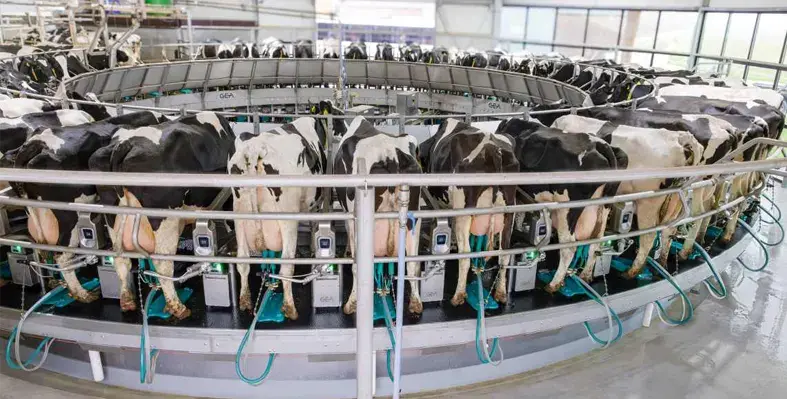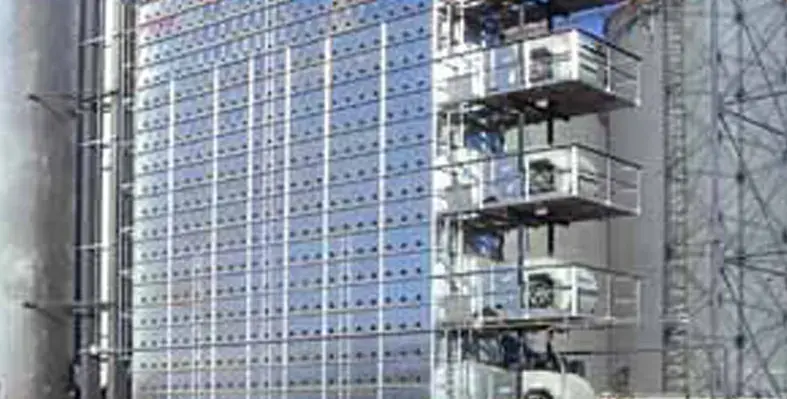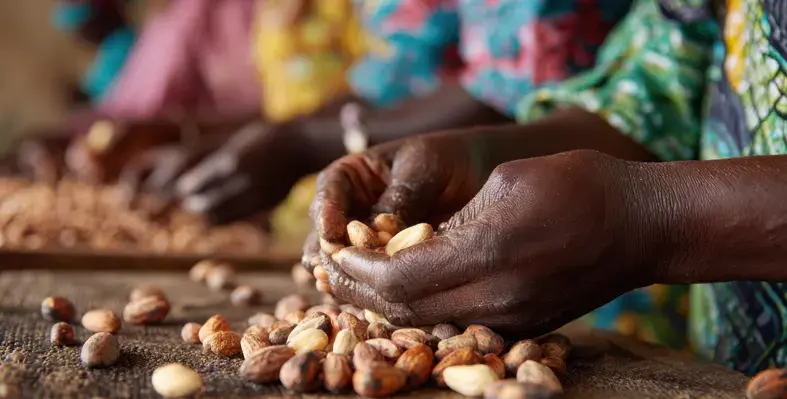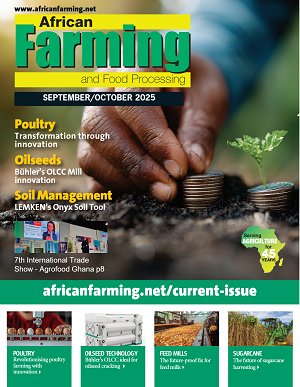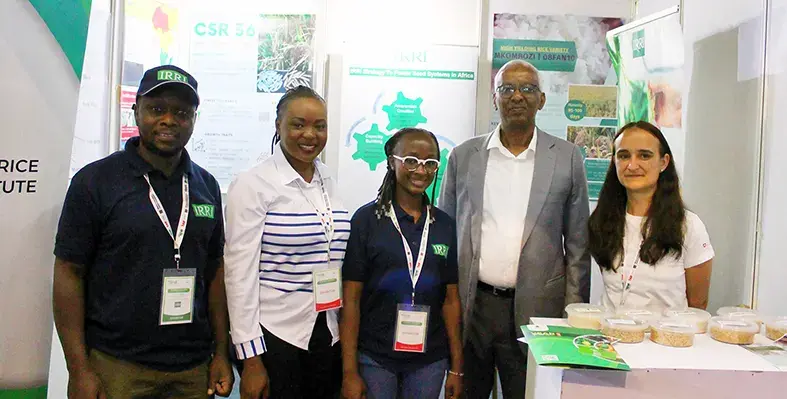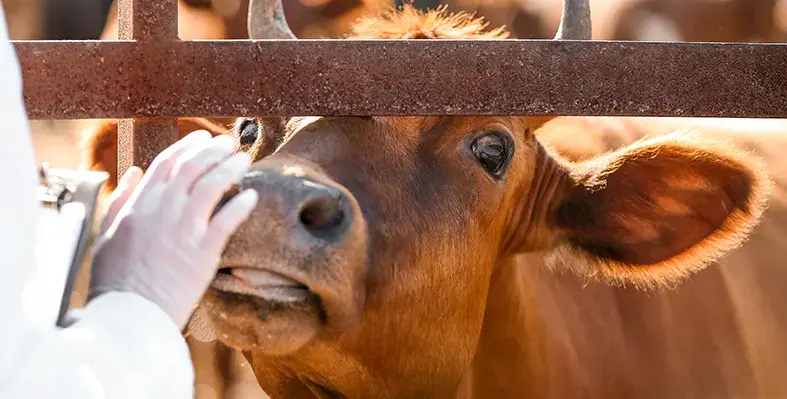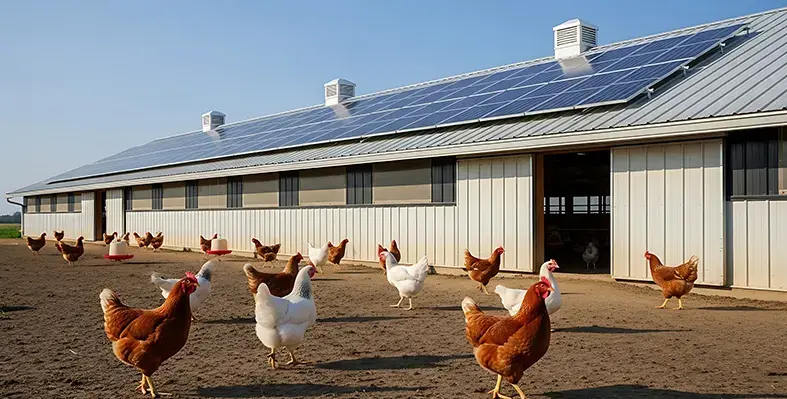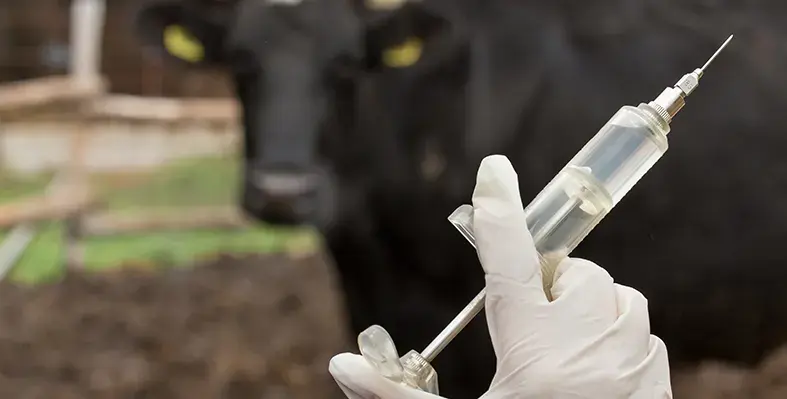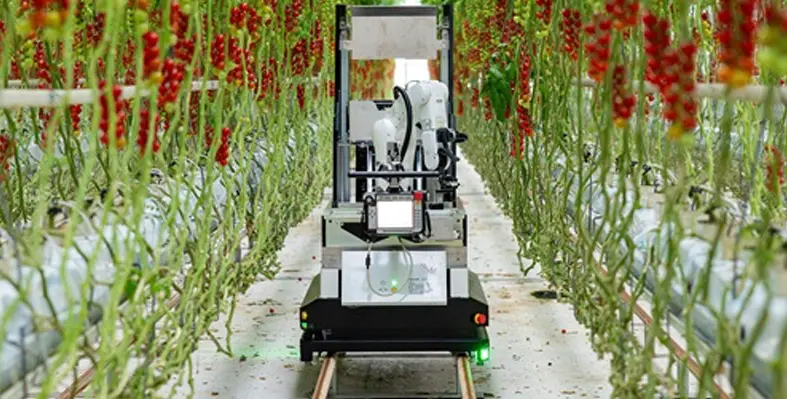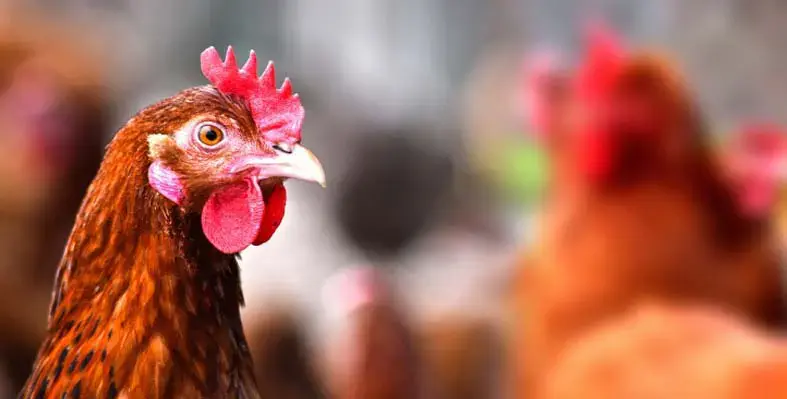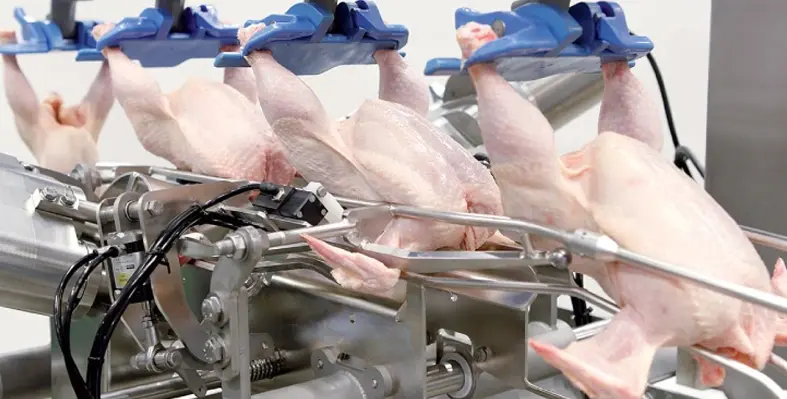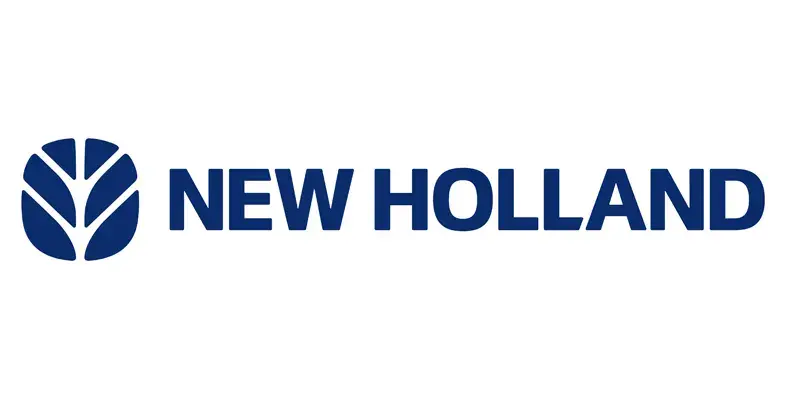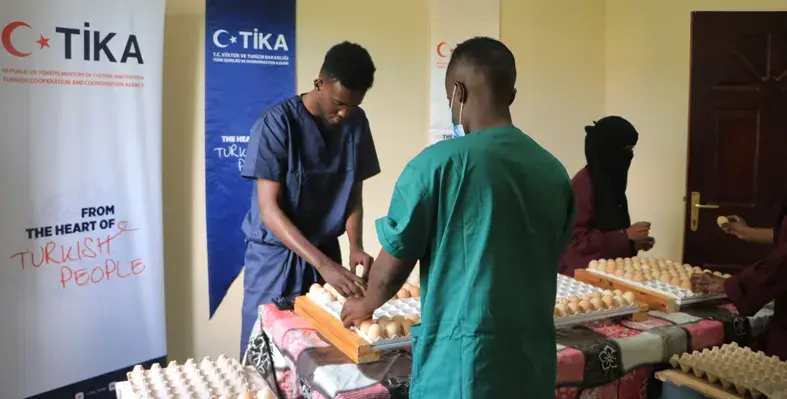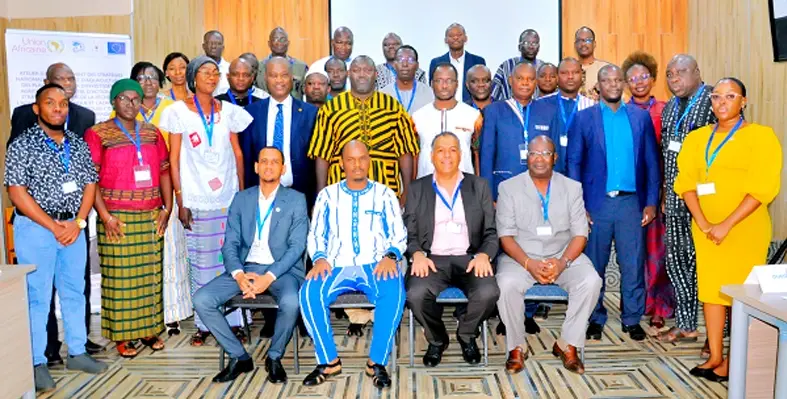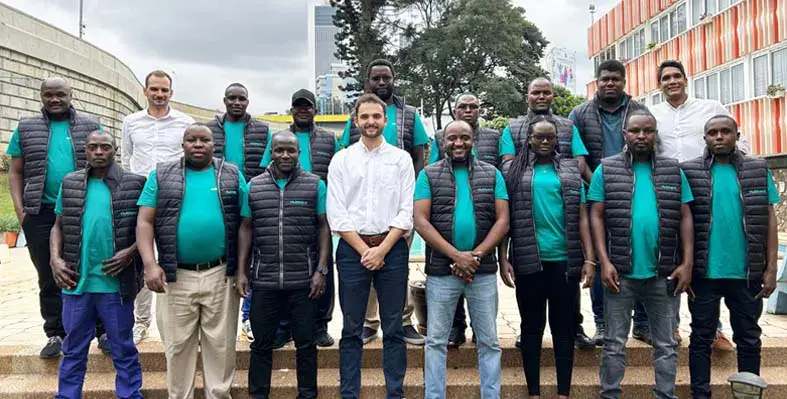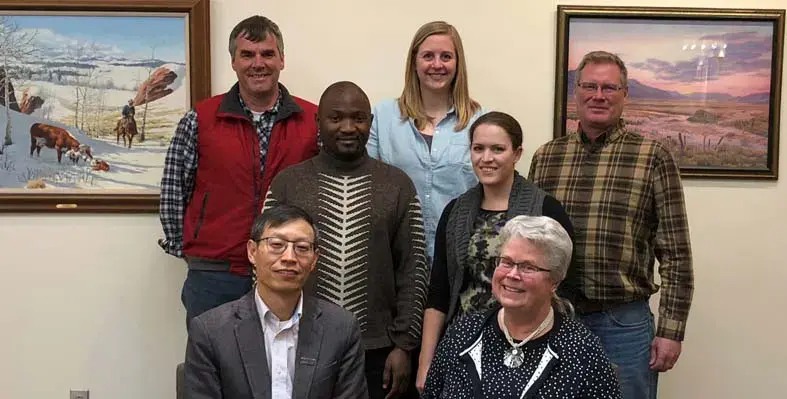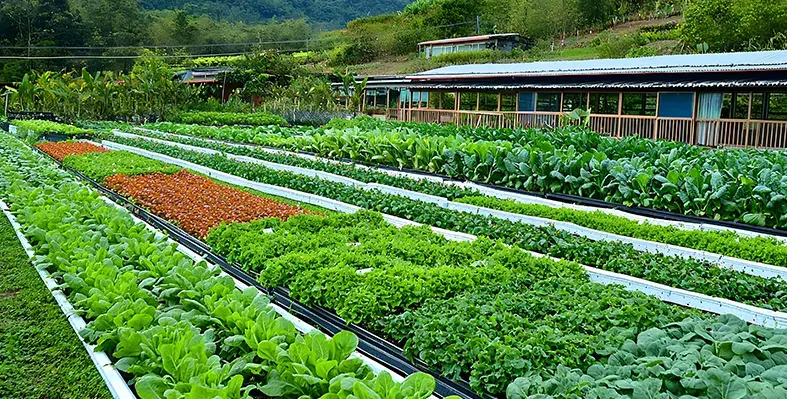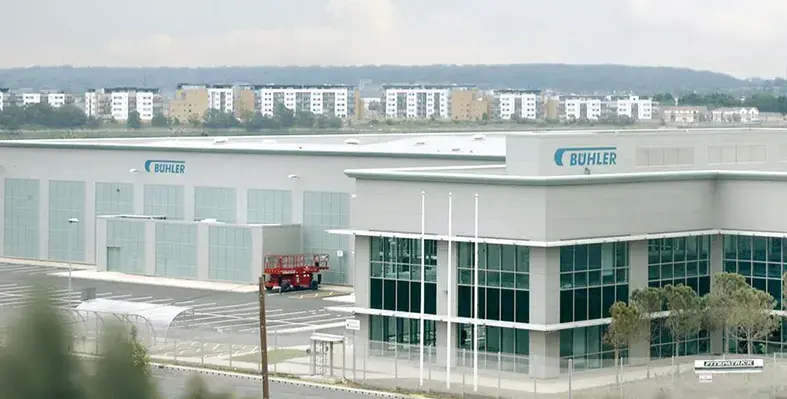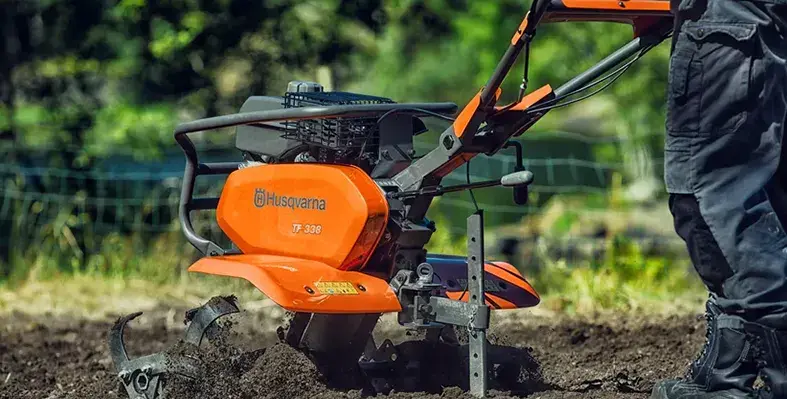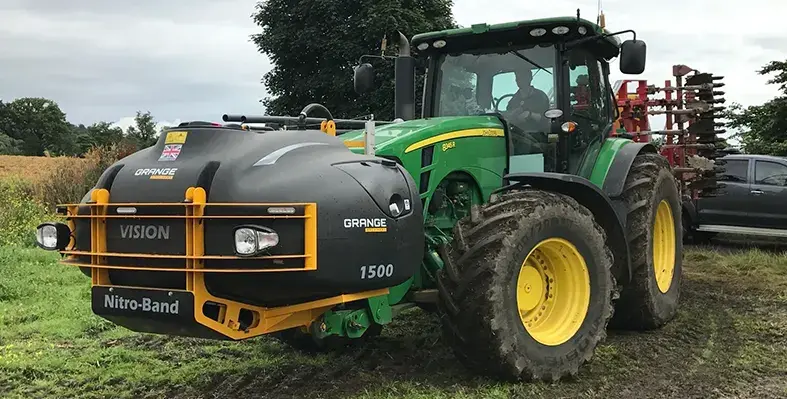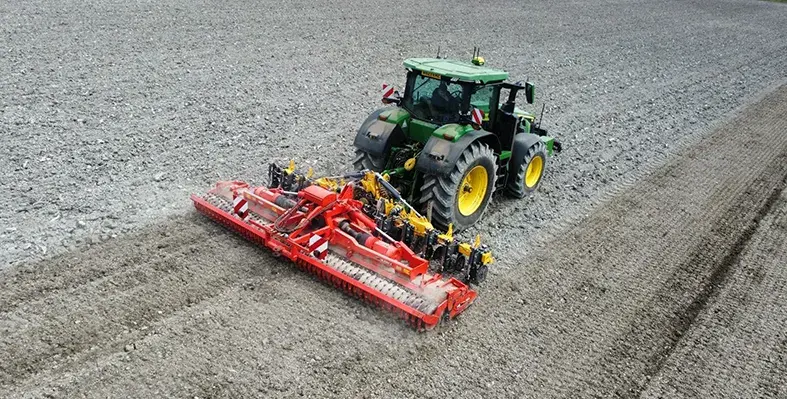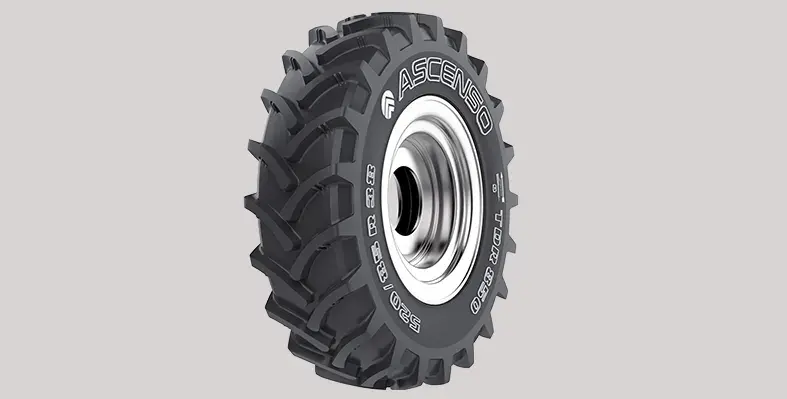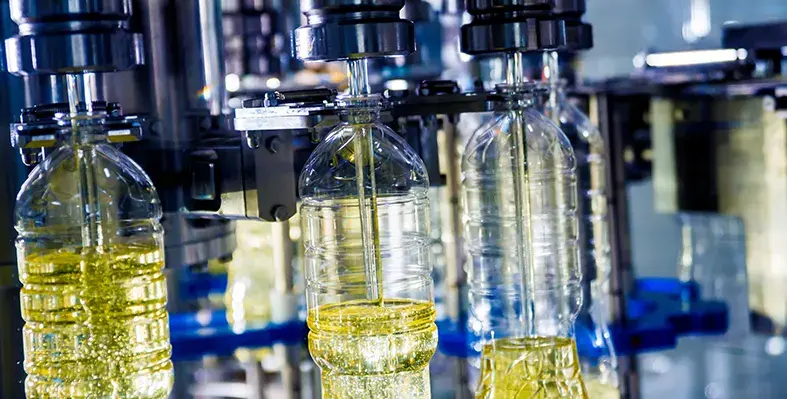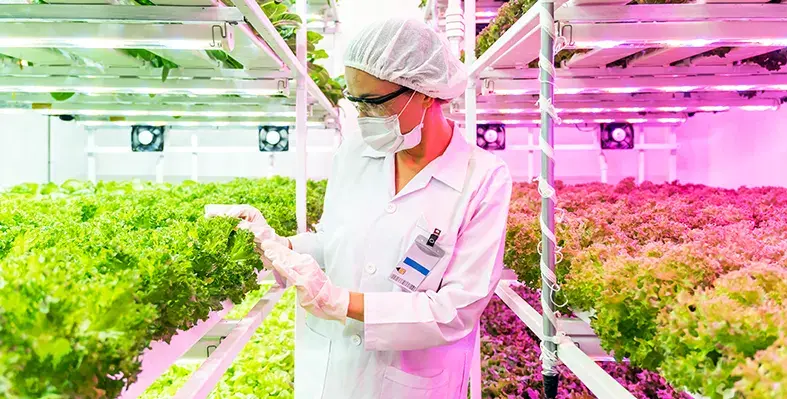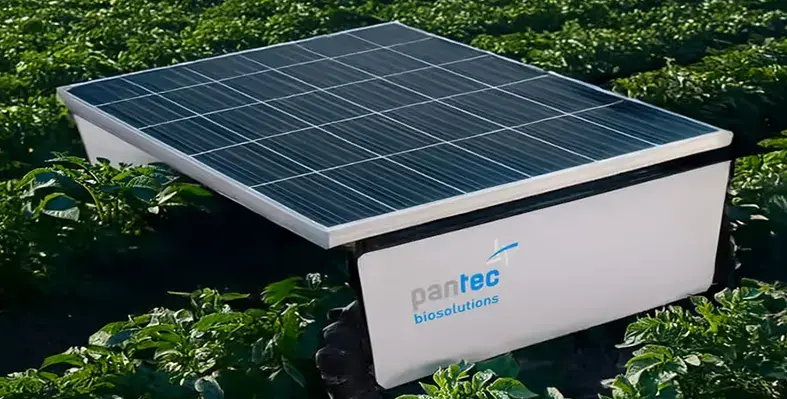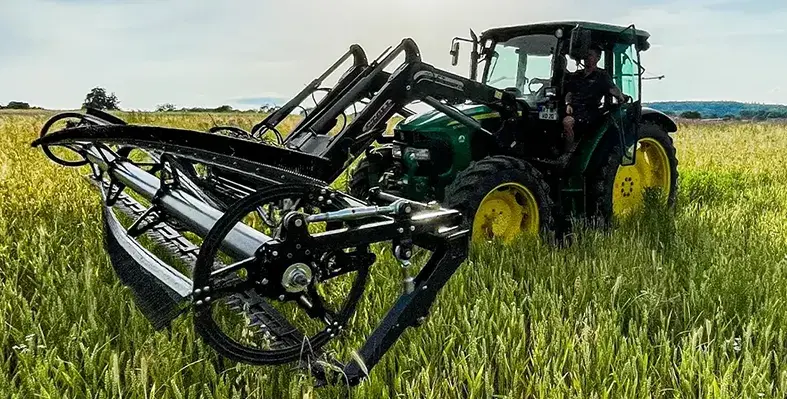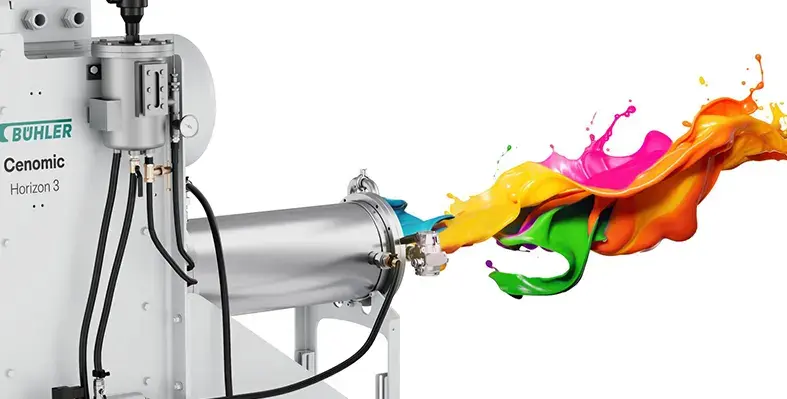When it comes to drying grain, maintaining the right kernel temperature is crucial to ensuring the final product meets high-quality standards.
Overheating the grain during the drying process can lead to irreversible damage, affecting the overall quality. Studies have shown that even kernel temperatures as low as 60°C (140°F) can significantly harm the grain’s quality. This is why many buyers of grain, especially those dealing with specialty crops, insist that their suppliers use lower drying temperatures to prevent heat damage.
Traditional dryers often struggle to maintain uniform drying conditions. In these systems, while some grains are exposed to temperatures that do not exceed the critical threshold, many others are subjected to temperatures far beyond what is ideal. This inconsistency can result in significant quality issues, including heat damage, stress cracks, and a decrease in test weight. Unfortunately, lowering the drying temperature to avoid this damage comes at a cost: it negatively impacts the dryer’s efficiency and capacity.
However, NECO dryers address these challenges by offering a solution that delivers consistent and even drying throughout the grain batch. With their innovative design, NECO dryers ensure that each kernel receives the same level of exposure to the heated air, preventing overheating and preserving the grain’s integrity. This process results in higher-quality grain with fewer stress cracks, no heat damage, and better test weight, all while maintaining optimal drying efficiency.
The Science Behind Grain Drying
Grain is typically dried by passing heated air through it, allowing the air to flow around each kernel. Because the air starts with low humidity, it has a strong capacity to absorb moisture. As the air flows through the grain, it absorbs moisture from within the kernels, and the evaporative cooling effect reduces the temperature of the wetter kernels. This process helps ensure that the grain doesn't heat up too quickly, preventing potential damage.
However, as the grain becomes drier, less moisture evaporates, and the temperature of the kernels rises closer to the temperature of the heated air. In traditional dryers, especially crossflow dryers (often called screen dryers), this process leads to uneven drying. Grain in the centre of the drying column is exposed to heated air for an extended period, resulting in over-drying and overheating. Meanwhile, the grain on the outer edges of the column remains under-dried due to inadequate exposure to the hottest air. This inconsistency not only compromises grain quality but also reduces the efficiency and capacity of the drying system.
How NECO Mixed-Flow Dryers Offer a Better Solution
NECO's mixed-flow dryers tackle these issues head-on by constantly moving the grain past a series of unique hot air ducts. This ensures that every kernel is exposed to the hottest air at different points throughout the drying process, promoting even drying across the entire batch. The continuous movement of the grain, combined with the gentle mixing, helps prevent overheating and ensures that no kernels are exposed to excessive heat for too long.
Additionally, the design of the NECO dryer improves airflow through the grain, enhancing both drying efficiency and capacity. The even exposure to hot air ensures that all grain is dried uniformly, with none of it being over-dried or under-dried. As a result, kernel temperatures remain consistently low, preserving grain quality, reducing stress cracks, and eliminating heat damage. The outcome is a higher-quality product with improved test weight, making NECO dryers an ideal choice for farmers and grain processors who value both efficiency and superior grain quality.
NECO’s innovative drying technology offers a more effective, consistent, and efficient way to dry grain. With uniform exposure to heat, these dryers eliminate the risks associated with traditional systems, ensuring that every batch of grain meets the highest quality standards.
In The Spotlight
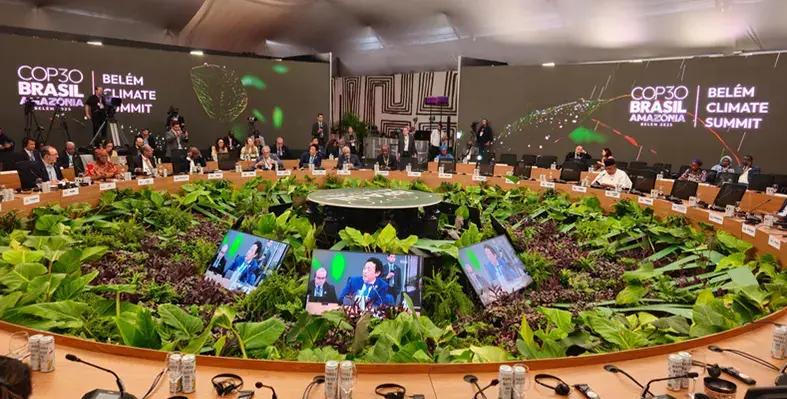
FAO seeks to ensure that farming remains part of the global solution to both climate change and food insecurity. (Image credit: FAO)
The Food and Agriculture Organization of the United Nations (FAO) has raised concerns that the global shortfall in climate finance is undermining efforts to transform agrifood systems, a sector with the potential to cut global emissions by up to one-third.
Speaking at the Belém Climate Summit ahead of COP30, the FAO emphasised that the gap in funding represents “a lost opportunity” to drive sustainable change.
Convened by Luiz Inácio Lula da Silva, Brazilian President the Summit gathered global leaders, ministers, and international agencies to explore climate solutions that prioritise fair energy transitions, biodiversity protection, and forest conservation. The discussions set the stage for the upcoming United Nations Climate Change Conference (COP30), scheduled for 10–21 November 2025 in Belém.
At COP30, FAO will underscore the importance of science-based agrifood solutions in reducing emissions, enhancing carbon capture, restoring ecosystems, and strengthening resilience, while safeguarding food security for the 1.2bn people who depend on these systems.
“From restoration of degraded agricultural lands to resilient crops and sustainable aquaculture and livestock, we have the solutions that deliver across sectors,” said FAO Director-General QU Dongyu in a speech delivered at the General Plenary Leaders Dialogue.
Examples from Brazil’s Amazon region highlight this potential: agroforestry projects are reviving degraded lands, supporting rural livelihoods, and providing “a triple win for biodiversity and food diversity, for food security, and for the climate.”
However, FAO warned that progress is constrained by limited investment. Despite contributions from the Green Climate Fund and the Global Environment Facility, forestry, livestock, fisheries, and crop production received only 4 percent of climate-related development finance in 2023.
“For a sector that can deliver a third of global emission reductions, this gap is not only unequal – it is a lost opportunity. By overlooking agrifood systems, we are leaving one of the most effective pathways to low-emission growth untapped,” Qu said.
The FAO also launched a Call to Action on Integrated Fire Management and Wildfire Resilience, endorsed by 50 countries and major organisations, including ITTO and UNEP. The initiative promotes proactive fire prevention strategies through scientific and traditional knowledge and modern technologies.
FAO views COP30 as a pivotal moment to reinforce food security and climate resilience through investment, innovation, and policy. It continues to collaborate with countries and partners under initiatives such as the Food and Agriculture for Sustainable Transformation (FAST) Partnership and the RAIZ Accelerator, both aimed at restoring degraded agricultural land and scaling sustainable food systems.
By keeping agriculture at the centre of climate action, FAO seeks to ensure that farming remains part of the global solution to both climate change and food insecurity.
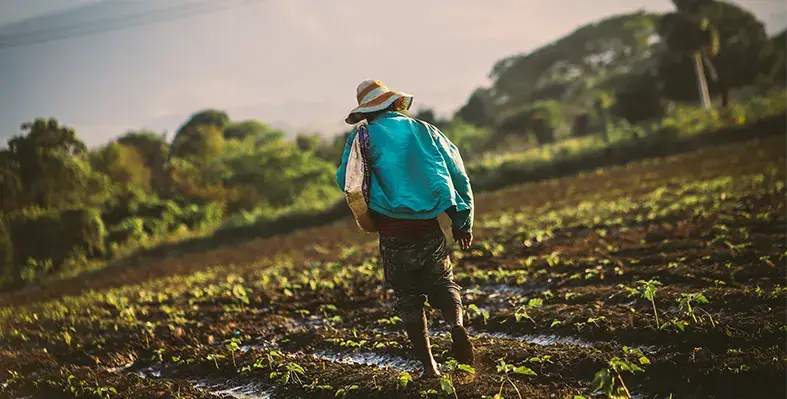
KTDA is reaffirming its commitment to empowering tea farmers and securing the sustainability of Kenya’s most valuable agricultural export.
The Kenya Tea Development Agency Holdings (KTDA(H) Limited) has unveiled a comprehensive plan to turn its ‘Farmers First’ philosophy into practical, results-driven systems aimed at improving farmers’ livelihoods and maximising returns from their tea production.
According to KTDA Group Chief Executive Officer, Wilson Muthaura, the organisation is executing a far-reaching transformation agenda built on sustainability, innovation, and farmer-focused governance. He emphasised that the core objective is to create more value for tea farmers while establishing KTDA as a world-class, future-ready enterprise.
Muthaura revealed that the agency has initiated a significant internal restructuring process to align operations with its transformation goals. As part of this effort, the KTDA board has set up ten cross-functional management committees tasked with enhancing efficiency, cutting costs, and promoting value addition across the value chain.
“The GCEO said the committees would also identify business opportunities along the entire value chain from farm to factory and all the way to the market.”
He further explained that these committees are actively contributing to KTDA’s newly developed Group Strategic Plan, designed to “future-proof” operations and ensure the agency remains resilient in a changing global tea market.
Muthaura noted that this transformation is not a top-down initiative but a collective effort inspired by a historic meeting—the first since the Tea Act reforms of 2020—convened by the KTDA chairman.
"All the 71 factory unit managers and KTDA's senior leadership came together to co-develop a roadmap that ensures every decision made benefited the farmer," he said.
At the heart of KTDA’s mission is ensuring farmers receive not only fair prices but also better quality services. "The services range from enhancing fertiliser distribution and leaf collection logistics to upgrading factory efficiency and introducing traceability tools," he said.
To achieve these goals, KTDA has begun implementing the Systems, Applications and Products (SAP) enterprise platform, which is already optimising operations and enabling smarter, data-driven decisions. The agency has also strengthened its digital infrastructure to build more agile processes and eliminate inefficiencies. "The agency is doubling down on communication and farmer engagement to ensure that growers are not just recipients of services, but co-owners of the solutions because they are shareholders, stakeholders, and strategic partners," he said.
Through these forward-looking initiatives, KTDA is reaffirming its commitment to empowering tea farmers and securing the sustainability of Kenya’s most valuable agricultural export.

Angonabeiro continues to support national farmers while promoting innovation, quality, and sustainability in the country’s coffee sector.
Twelve Robusta coffee (Coffea canephora) producers from Amboim, in Angola’s Cuanza-Sul Province, recently received a payment of US$23mn thanks to sales of their coffee and a partnership with Portuguese coffee company Angonabeiro
The ceremonial handover, held in Luanda, was attended by the Portuguese Ambassador Francisco Duarte, Angonabeiro executives João and Rui Nabeiro, and Lucinda Mário de Castro Cunha, coordinator of the Amboim Women Farmers' Association.
Of the total amount, US$15mn were delivered immediately, with the remainder set to follow in a phased support process until December. The funds are earmarked for purchasing equipment to enhance coffee production, boosting productivity, sustainability, and autonomy among local women farmers. This partnership is designed to strengthen the coffee supply chain in Amboim while promoting innovation and long-term growth.
Rui Nabeiro highlighted Angola’s growing role in the company’s international revenue, now accounting for 15% of total earnings, with projections showing a 12% increase this year. Delta, part of the Nabeiro Group, is Angola’s largest buyer, processor, and exporter of green coffee, handling 1,200 tons last year and estimating around 1,000 tons this year. This trade directly supports 20,000 to 40,000 producing families per harvest, reflecting the sector’s vital socio-economic impact.
The initiative also aims to revitalize Angola’s green coffee supply chain by providing technical training, improving farming conditions, and mitigating logistical challenges, ensuring farmers continue producing high-quality coffee and maintain ownership of their land.
Portuguese Ambassador Francisco Duarte praised the strong Angola-Portugal economic relations, noting that over 5,000 Portuguese companies export to Angola, with Portugal being the country’s second-largest supplier after China. Many of these companies employ local staff, contribute taxes, and build human capital, creating thousands of jobs.
Lucinda Cunha of the Amboim Women Farmers’ Association emphasized the significance of the Angonabeiro partnership. Despite challenges such as vandalism and illegal purchasing of coffee, farmers managed to harvest up to 800,000 kilos, and the financial support will help maintain and expand coffee production, from cleaning plantations to preparing new planting sites.
Operating in Angola for almost 27 years, Angonabeiro continues to support national farmers while promoting innovation, quality, and sustainability in the country’s coffee sector.
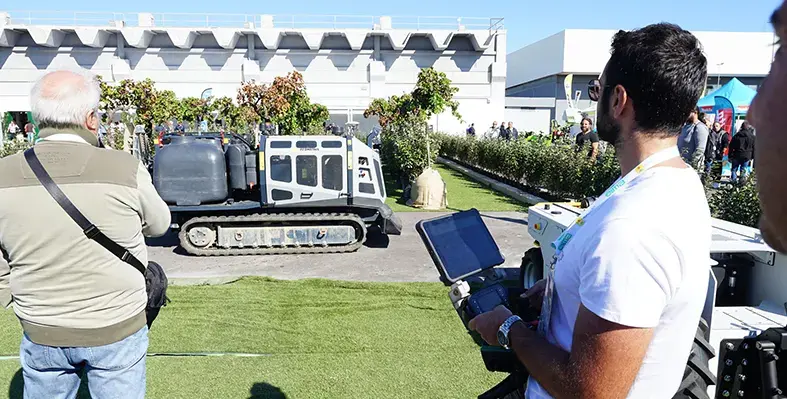
The New Africa: Education, Training, and Education for Agricultural and Agro-Mechanical Technicians. (Image credit: Agrilevante)
As Africa braces for a population boom set to reach 2.5bn by 2050, the continent faces a dual challenge: ensuring food security while preparing a skilled workforce to drive agricultural transformation.
At Agrilevante 2025 in Bari, Italy, this challenge was met head-on with the unveiling of a new international initiative focused on vocational education and technical training for African agricultural and agro-mechanical professionals.
The conference, titled “The New Africa: Education, Training, and Education for Agricultural and Agro-Mechanical Technicians,” marked the start of a collaborative programme driven by FederUnacoma, the Italian Federation of Agricultural Machinery Manufacturers, and Internationalia Publishing House. The programme aims to assess and address skill gaps across the African agri-sector, starting with Tanzania, Tunisia, and Ghana - three pilot countries prioritised in Italy’s Mattei Plan for African development partnerships.
A key takeaway from the event was the potential of education as a catalyst for agricultural innovation. As highlighted in the conference, Africa holds over 60% of the world’s uncultivated arable land, and according to the African Development Bank, the continent’s agri-food market is expected to triple in value over the next five years from US$280bn to US$1tn.
“In a context like Africa’s, where education systems are characterised by numerous problematic elements and a sizeable school dropout rate,” said Gianfranco Belgrano, Director of Africa Affari and Internationalia, “training plays an essential role in meeting the demand for new skills in a constantly evolving market, especially in the agricultural and agro-mechanical sectors.”
The programme aims to go beyond traditional university-level exchanges and address the technical education gap, particularly in agricultural mechanics-a key area often overlooked in previous initiatives. The project will focus on technical and agricultural schools, helping to build a pipeline of trained technicians able to support the modernisation of local farming systems.
“There are great prospects for cooperation between Italian industries and African countries,” added Mariateresa Maschio, President of FederUnacoma. “From the design of technologically advanced agricultural machinery to the creation of high-precision irrigation systems, from supply chain implementation to capacity building, our companies possess excellent know-how that can meet the training needs of African agricultural economies.”
Belgrano reinforced the project’s initial focus: “We decided to launch the project with Tanzania, Tunisia, and Ghana because these are countries with a lot of agricultural area, which have structured school systems and can therefore already begin collaboration programmes with Italian companies.”
As Agrilevante showcases innovation in Mediterranean agri-tech, this new training initiative plants the seeds of long-term partnership, equipping Africa’s future farmers and technicians with the tools they need to succeed.
The Rwanda Agricultural and Animal Resources Board (RAB) has imposed an immediate suspension on the movement of livestock in Kanama, Nyakiliba, and Kanzenze sectors of Rubavu District after a confirmed outbreak of Foot-and-Mouth Disease (FMD)
The precautionary move aims to protect farmers’ livelihoods and prevent the highly contagious disease from spreading to other regions.
According to a statement released on Tuesday, 21 October, all movement and trade involving cows, goats, sheep, and pigs are temporarily banned. The restrictions also extend to the sale and transportation of animal products such as meat, milk, and skins. These measures are part of a nationwide effort to safeguard Rwanda’s livestock sector, which plays a vital role in the country’s food security and rural economy.
"Farmers with sick animals, suspected or developing symptoms of the illness are requested to be separated from other herds and report to the veterinary officer at the sector level,” the statement reads in part.
To strengthen control efforts, RAB has ordered that all cattle aged six months and above across Rubavu District be vaccinated every six months. Animals suspected of coming into contact with infected livestock will also be separated and quarantined to curb transmission.
The institution further cautioned that anyone ignoring these prevention measures will face penalties as outlined in Rwanda’s law governing the control of contagious animal diseases.
Local authorities have been called upon to play an active role in enforcing these guidelines. They are urged to conduct regular disinfection campaigns and closely monitor farmers to ensure that no contact occurs between healthy and infected animals.
Foot-and-Mouth Disease is a serious viral infection that affects cloven-hoofed animals and can lead to significant production losses through reduced milk yield, weight loss, and restricted trade opportunities. By acting quickly, the Rwandan government aims to minimise economic losses and maintain the health of livestock, which remains a backbone of many rural households.
RAB’s swift intervention highlights the importance of cooperation between farmers, veterinarians, and local leaders in protecting the nation’s agricultural sector.

FAO seeks to ensure that farming remains part of the global solution to both climate change and food insecurity. (Image credit: FAO)
The Food and Agriculture Organization of the United Nations (FAO) has raised concerns that the global shortfall in climate finance is undermining efforts to transform agrifood systems, a sector with the potential to cut global emissions by up to one-third.
Speaking at the Belém Climate Summit ahead of COP30, the FAO emphasised that the gap in funding represents “a lost opportunity” to drive sustainable change.
Convened by Luiz Inácio Lula da Silva, Brazilian President the Summit gathered global leaders, ministers, and international agencies to explore climate solutions that prioritise fair energy transitions, biodiversity protection, and forest conservation. The discussions set the stage for the upcoming United Nations Climate Change Conference (COP30), scheduled for 10–21 November 2025 in Belém.
At COP30, FAO will underscore the importance of science-based agrifood solutions in reducing emissions, enhancing carbon capture, restoring ecosystems, and strengthening resilience, while safeguarding food security for the 1.2bn people who depend on these systems.
“From restoration of degraded agricultural lands to resilient crops and sustainable aquaculture and livestock, we have the solutions that deliver across sectors,” said FAO Director-General QU Dongyu in a speech delivered at the General Plenary Leaders Dialogue.
Examples from Brazil’s Amazon region highlight this potential: agroforestry projects are reviving degraded lands, supporting rural livelihoods, and providing “a triple win for biodiversity and food diversity, for food security, and for the climate.”
However, FAO warned that progress is constrained by limited investment. Despite contributions from the Green Climate Fund and the Global Environment Facility, forestry, livestock, fisheries, and crop production received only 4 percent of climate-related development finance in 2023.
“For a sector that can deliver a third of global emission reductions, this gap is not only unequal – it is a lost opportunity. By overlooking agrifood systems, we are leaving one of the most effective pathways to low-emission growth untapped,” Qu said.
The FAO also launched a Call to Action on Integrated Fire Management and Wildfire Resilience, endorsed by 50 countries and major organisations, including ITTO and UNEP. The initiative promotes proactive fire prevention strategies through scientific and traditional knowledge and modern technologies.
FAO views COP30 as a pivotal moment to reinforce food security and climate resilience through investment, innovation, and policy. It continues to collaborate with countries and partners under initiatives such as the Food and Agriculture for Sustainable Transformation (FAST) Partnership and the RAIZ Accelerator, both aimed at restoring degraded agricultural land and scaling sustainable food systems.
By keeping agriculture at the centre of climate action, FAO seeks to ensure that farming remains part of the global solution to both climate change and food insecurity.
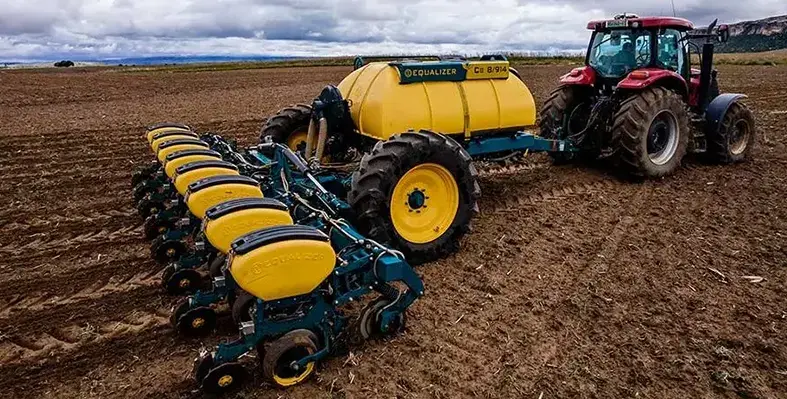
LEMKEN’s precision seeding portfolio and extend its presence in key agricultural markets worldwide. (Image credit: LEMKEN)
In a move that underlines its commitment to innovation in agricultural technology, LEMKEN, a global leader in professional crop production equipment, has announced the acquisition of South African seeding technology manufacturer Equalizer
The partnership is set to boost LEMKEN’s precision seeding portfolio and extend its presence in key agricultural markets worldwide.
Founded in 2000 and based in Cape Town, Equalizerhas built a strong reputation for designing and producing high-capacity seed drills and precision planters tailored for large-scale and conservation farming systems. The company’s solutions ranging from planters with up to 36 rows to seed drills with working widths of up to 24 metres are engineered for no-till and minimal soil disturbance systems, reflecting the growing global demand for sustainable farming technologies.
By bringing Equalizer into its fold, LEMKEN aims to bridge technological and market gaps within its existing product lineup. While LEMKEN has gained recognition for its DeltaRow precision seeding system, Equalizer’s single-row planting technology complements and expands LEMKEN’s capabilities, offering farmers more options to improve planting accuracy, soil health, and operational efficiency.
According to Anthony van der Ley, CEO of LEMKEN, the acquisition “perfectly complements our seeding technology range and helps us serve markets we couldn’t reach before.” He added that the move reflects LEMKEN’s broader strategy to promote sustainable and efficient farming through advanced machinery and data-driven innovation.
LEMKEN has confirmed plans to invest in Equalizer’s operations in South Africa, with an immediate focus on enhancing spare parts logistics and maintaining local expertise. The Equalizer brand and management team will continue to operate independently, ensuring continuity for existing customers while gaining access to LEMKEN’s research, production, and global distribution network.
Equalizer’s founder and managing director, Gideon Schreuder, expressed optimism about the collaboration, noting that combining the two companies’ expertise will accelerate product development and deliver greater value to farmers worldwide.
The acquisition marks another step in LEMKEN’s mission to lead the digital transformation of agriculture. By integrating complementary technologies and expanding into emerging markets, the company reinforces its position as a pioneer in precision agriculture, no-till seeding, and sustainable crop production systems.





